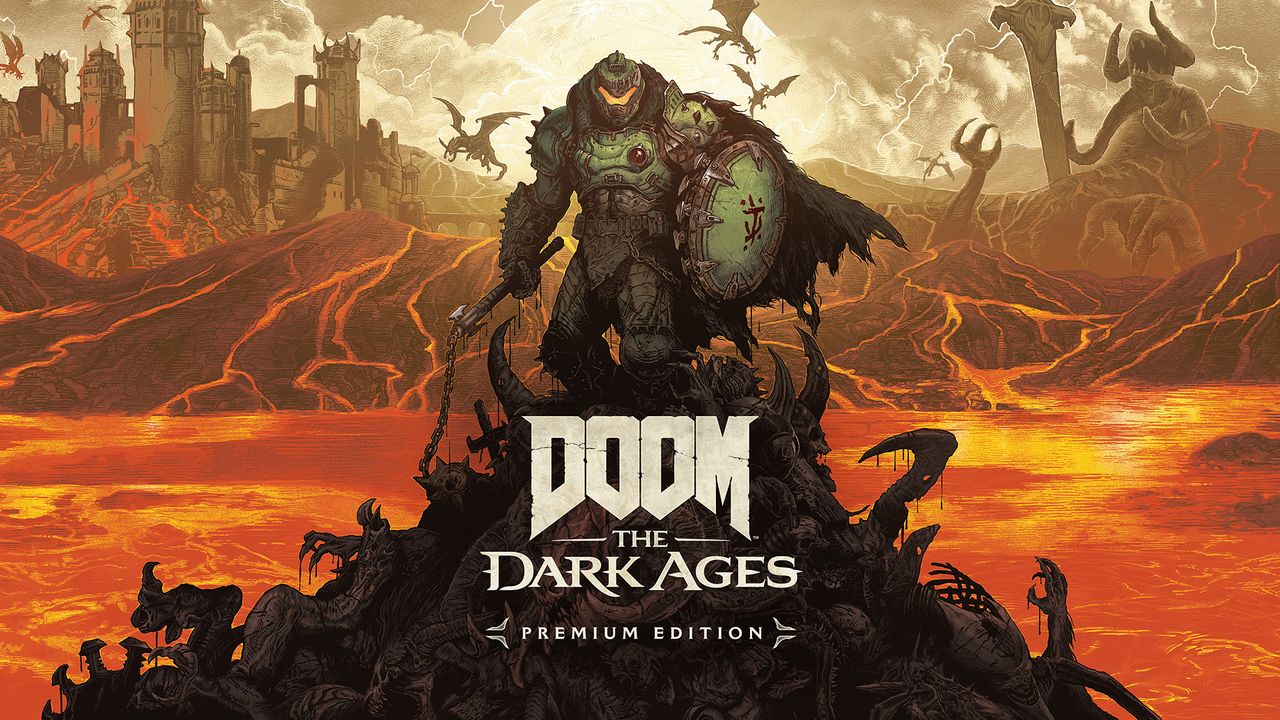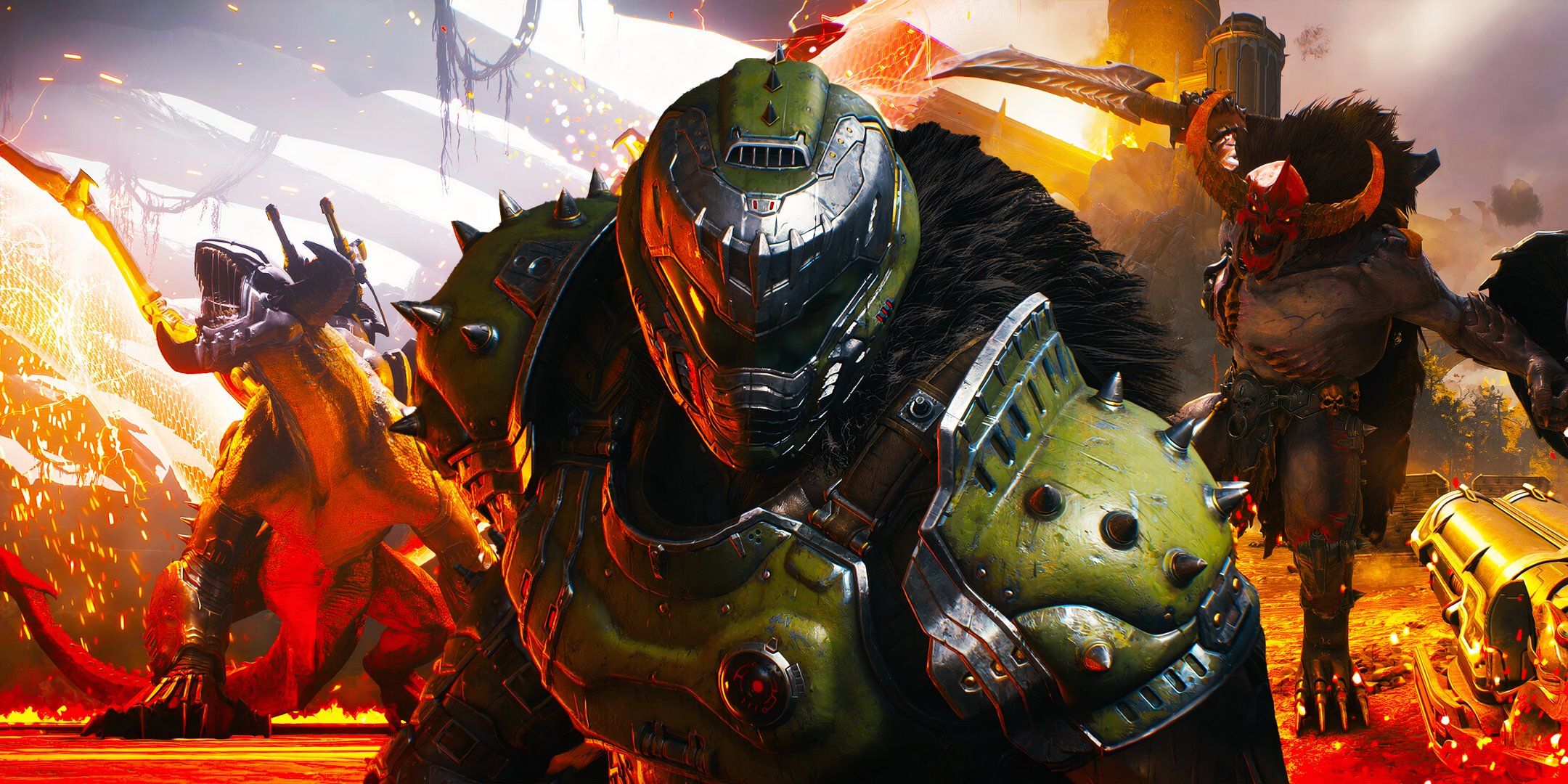The Five Year Test represents the period it took id Software to release DOOM: The Dark Ages, which is the third episode since the series’ reboot in 2016. However, rather than simplifying things, they opted for a prequel set before the events of the 2016 game. DOOM: The Dark Ages delves into the origin story of the DOOM Slayer within an environment that blends medieval settings with science fiction, maintaining the franchise’s essence through its demonic undertones. Clad in his signature helmet, metal armor, and fur cape, wielding a chainsaw in one hand and powerful weapons in the other, our Apocalypse Knight embarks on another descent into Hell, recounting how he became the formidable, relentless, and deadly character we know today. Most notably, the gameplay undergoes significant changes. Gone are the days of agile movements; now players move slower but with increased brutality. While shooting remains indiscriminate, close combat is emphasized alongside new elements like evasion and parrying. Does this fresh direction ring a bell? Is it convincing? Discover all this in our detailed review.
Id Software has been clear from the start of the promotional campaign: DOOM The Dark Ages aims to give players the impression of commanding a main battle tank, whereas its predecessor, DOOM Eternal, made them feel like they were piloting a fighter jet. This is precisely the feeling experienced in the game’s initial moments. The Slayer moves with a heavy step, has severely limited jumping capabilities, and has lost significant vertical mobility. This is a deliberate choice by the developers who wish to break away from DOOM Eternal and DOOM 2016. The game draws more from the spirit of the original DOOM games, particularly through gameplay centered on dodging slow projectiles and more grounded close-quarters combat. However, rest assured, it remains a fast-paced FPS experience with visceral feelings and a tense pace. The excessive mobility is traded for controlled heaviness, more physical brutality, intense ground combat, and most importantly, a closer-quarters combat approach. But fans of fast-paced FPS need not worry; the pacing remains extremely sustained, especially once one is familiar with all the intricacies of gameplay and various movement options. It’s clear that we transition from frenetic mobility to an assumed heaviness, which adds more weight to encounters. A fall from height now causes an explosion that obliterates nearby enemies, and the level design also reflects these new constraints: clearer, more compact, and more strategic.
“DOOM: The Dark Ages,” developed by id Software following a five-year hiatus since the 2016 reboot, is a prequel centered on the DOOM Slayer’s origin story. Set in a universe that blends medieval and sci-fi elements with demonic themes, players control an armored, chainsaw-wielding warrior navigating through Hell’s depths to become the lethal character known today. The game significantly alters gameplay compared to its predecessors, DOOM Eternal and 2016’s DOOM. Instead of rapid aerial maneuvers and indiscriminate shooting, The Dark Ages emphasizes slower, more brutal movement with a focus on close-quarters combat, evasion, and parrying. This shift aims to evoke the feeling of piloting a main battle tank as opposed to the fighter jet sensation from DOOM Eternal. Despite reducing excessive mobility, the experience remains fast-paced and visceral with controlled heaviness, intense ground combat, and strategic level design emphasizing clearer, more compact areas that require a deeper understanding of movement options and encounter mechanics.
If the Slayer has lost his double jump, super dash, and legendary agility, he has nonetheless recovered an important weapon, the chainsaw-shield, which is central to this new approach. This weapon will evolve throughout missions, chapters, and performance milestones, becoming a key component of the close-combat focused combat system. The chainsaw-shield allows for parrying, counter-attacking, throwing it like a javelin, and even activating environmental elements, offering a fresh perspective on gameplay. However, this is not all; id Software has been significantly influenced by FromSoftware’s game design philosophy over the past 15 years. They appear to have aimed at creating more complex, deeper, and arguably more enjoyable combat systems. In DOOM: The Dark Ages, players will extensively learn about dodging and primarily parrying, always with the chainsaw-shield. Successfully countering at the right moment allows for chaining into a glory kill, resource regeneration, and increased attack efficiency. However, attention must be paid to the types of attacks sent, as those surrounded by a green halo can be countered without health loss; there is a subtlety here: a perfect counterstun briefly stuns the enemy, allowing for an immediate follow-up counterattack; otherwise, their projectile can be sent back at them, dealing considerable damage.
In DOOM The Dark Ages gameplay, melee combat takes center stage, supported by three distinct weapons: an electrical gauntlet, a spiked flail, and a massive war hammer. Once acquired, players must strategically choose which weapon to use for close-range engagements, as each has limited uses akin to ammunition constraints. Each weapon possesses its own charge capacity, allowing consecutive strikes that deliver powerful barrages capable of defeating even the toughest foes. Managing stamina and abilities adds a tactical layer to combat scenarios. Crucially, the game’s design revolves around an unending cycle of aggression, where every kill replenishes health, ammo, and armor. This dynamic ensures players remain in constant close-quarters combat with enemies.The gameplay involves fluid transitions between shooting, shielding, melee attacks, and glory kills, creating a relentless rhythm where each action is critical. Notable among these tools is the Reaver Chainshot, renamed “Chain Shot” for the English version, which allows players to launch a chain ball at enemies and charge the attack for increased damage. Utilizing this feature is both thrilling and intense.—(Do not use this. It is only for reference.)Context:DOOM: The Dark Ages, developed by id Software as part of the rebooted DOOM series, offers a prequel narrative that explores the origin story of the DOOM Slayer. Departing from the rapid mobility characteristic of previous entries in the franchise, the game emphasizes slower yet more brutal combat and movement focused on close-quarters encounters rather than ultra-fast shooting. This shift harks back to the original DOOM games while maintaining their quick pace. Key innovations include a chainsaw-shield that doubles as both an offensive weapon and defensive tool for parrying, countering attacks, and activating environmental elements. Drawing inspiration from FromSoftware’s combat systems, DOOM: The Dark Ages features more intricate mechanics centered around dodging and parrying with the chainsaw-shield to chain into glory kills, regenerate resources, and improve attack effectiveness. Essentially, this installment prioritizes a grounded, heavy-handed approach in combat by trading excessive mobility for controlled brutality and intense close-quarters battles, providing players both a fresh perspective on the franchise while preserving its hallmark fast-paced, visceral gameplay experience.
OPEN HELL
Similar to “DOOM Eternal” in 2020, mastering the combat system of “DOOM: The Dark Ages” will require an adaptation period. This is due to the complementary nature of weapons, melee attacks, and the use of a chainsaw-bayonet for a rich and dynamic combat experience. As you progress through chapters, you’ll discover numerous possibilities available. However, the structure of “DOOM: The Dark Ages,” built around open zones that are frequently revisited, may not work as well. It is not a Metroidvania, but at times it resembles one, with certain chapters spanning across the same explorable area. While you can take a direct path to the essentials, id Software has included numerous secrets and locks to encourage thorough exploration. Some doors require colored keys, while others are only accessible by solving puzzles. The idea is to break away from the traditional linearity of the DOOM series, but this approach is only partially successful due to two major issues.
The puzzles are quite basic and only require looking up, and the arenas heavily rely on zone cleaning that recharges after certain passages. This creates a redundant setup, especially when replaying the same area for the 4th or 5th time. However, the core idea of introducing a change of pace in the campaign is good, particularly with 22 levels completed and many secrets to uncover, there’s plenty to do. Yet, most treasures lack genuine appeal to push players towards completing everything at 100%. Usually, they are just currency and rubies to upgrade the Slayer’s abilities, while more distinctive cosmetics could have made a difference. This is subjective, but the somewhat basic level design did not inspire me to pursue the platinum trophy.
DRAGON, NOT GOOD
When discussing the criticisms of the game, let’s focus on the dragon-back and giant mecha control phases, particularly the well-known Atlan sequences. While there were enjoyable moments in the destructive gameplay reminiscent of Pacific Rim, the dragon-back sequences are less engaging. Despite offering some freedom of movement across levels, the action soon becomes repetitive due to clumsy handling and inconsistent design choices by the developers. The game alternates between sequences that parody Panzer Dragoon but lack entertainment value and have poor level design, as well as mandatory battles against turrets and large enemies that rarely provide a challenge. Additionally, there is an unclear lock system requiring simultaneous shooting and dodging to trigger slow-motion attacks; this could be more inventive. On the positive side, the Atlan sequences are more enjoyable because combat incorporates the dodge system, though the overall setup remains quite basic. These moments can be viewed as recreational breaks, and while they succeed partially in their intent, there is room for improvement.
Have any thoughts?
Share your reaction or leave a quick response — we’d love to hear what you think!


